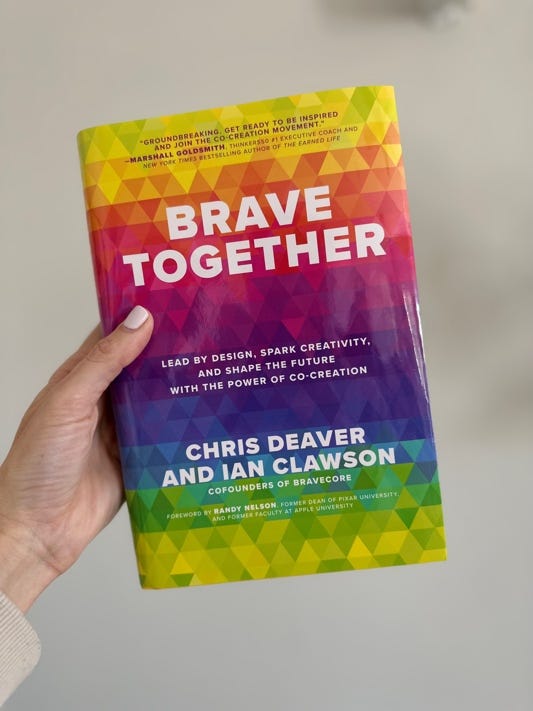AI tools have flooded our feeds with content, but not all of it feels human. Writers and content creators everywhere face a challenge: How do you harness AI without losing the unique voice and authenticity that connects with readers? The answer isn’t to reject AI but to treat it as a partner.
So why, then, do so many posts and articles feel eerily similar? Not necessarily in their topics, but in tone, structure, and style. It’s as though everyone is recycling the same 4–5 popular ChatGPT prompts to optimize their writing. The result? A sea of homogenized “How-to” guides and AI-generated content across LinkedIn, X, and Instagram. Not everyone can or should be a self-proclaimed expert, right?
Is the explosion of content even helpful? Or are we sifting through the debris of generic shrapnel to extract utility and meaning? Don’t add to the noise with quick-to-publish AI written material. Being seen as a writer shouldn’t be a volume play. It’s about connecting deeply through a deliberate, quality-driven process.
“To ensure quality, then, excellence must be an earned word, attributed by others to us, not proclaimed by us about ourselves. It is the responsibility of good leaders to make sure that words remain attached to the meanings and ideals they represent.” – Ed Catmull
Many writers see AI as their ticket to improve their writing skills. We see it the other way around. Writer’s will make progress as they improve their overall collaboration skills. Amplifying their creativity abilities first. We should treat AI as a co-creative partner instead of looking to replace our role as writers. Here’s how to approach AI as a tool that deepens your craft:
1. Writing is Iterative: Embrace AI as Your Editor, Not Your Replacement
Great writing doesn’t happen in a single draft. It’s about refinement, exploration, and rethinking. This takes time and space. AI can be a powerful partner. Ask it to reframe a sentence, sharpen a concept, or simplify a passage. Then, compare the options with your intent and choose what aligns best with your voice. By viewing AI as an editor rather than a replacement, you remain in control of your craft. You make the final decision on what to publish. Iterating your work is a matter of taste making.
2. Authenticity is Everything: Don’t Let AI Dilute Your Voice
Readers connect with authenticity. Your unique experiences, insights, and emotions are what makes your writing real. AI can suggest improvements or polish a draft, but it cannot copy the nuances of what makes your writing personal. Your quirks, truths, and unique way of seeing the world are irreplaceable. Use AI to refine and elevate your work, but let your voice and authenticity remain the driving force behind every piece. The heart of your writing is what readers remember. Building trust over time.
3. Balance Vision with Practicality: AI for Strategy and Structure
Big ideas can feel overwhelming without a clear structure. We know this all too well having published a book on the future of work. Only, we didn’t have the AI resources that writers use today. These tools can help bridge this gap by organizing thoughts, suggesting frameworks, or summarizing dense material into digestible points. When starting a new piece, use AI to outline potential themes. From there, flesh out the ideas with your own creativity and perspective. This “choose your own adventure” approach while working with AI ensures your work is both cohesive and uniquely yours, blending practicality with imaginative freedom.
4. Collaborate, Don’t Delegate
Bad writing is usually a sign of poor collaboration with this modern tool. Writers who see AI as a conversation partner, someone to bounce ideas off, will find their work enhanced rather than diminished. Use its feedback as inspiration, not a final product. AI shines as a collaborator when used thoughtfully, but the moment it takes over entirely, you risk the soul of your work being lost. Seek transformations instead of transactions.
5. The Best Writing Connects Us
At its core, writing is about connection. It’s a bridge between your experiences and your audience, built with vulnerability, intention and careful design. Readers relate to your writing when they can see themselves in your words, the emotions and truths that resonate deeply. It’s your personal touch that creates a lasting bond with readers. See your audience in mind as you write, using AI as a tool to support and enhance the clarity of your message without losing the heart of your work. Keep your humanity front and center.
Put the Soul Back into Writing
The future of writing isn’t about choosing between AI and humanity—it’s about combining them to create something more impactful. AI is a tool, but the strength of your work lies in your stories, struggles, and your ability to connect. Embrace AI as a collaborator, not a replacement, and keep your writing authentic by sharing the human soul behind it.
-----------
Want to discover how to collaborate better with AI and other people?
Learn from co-creative principles found in our book Brave Together.





